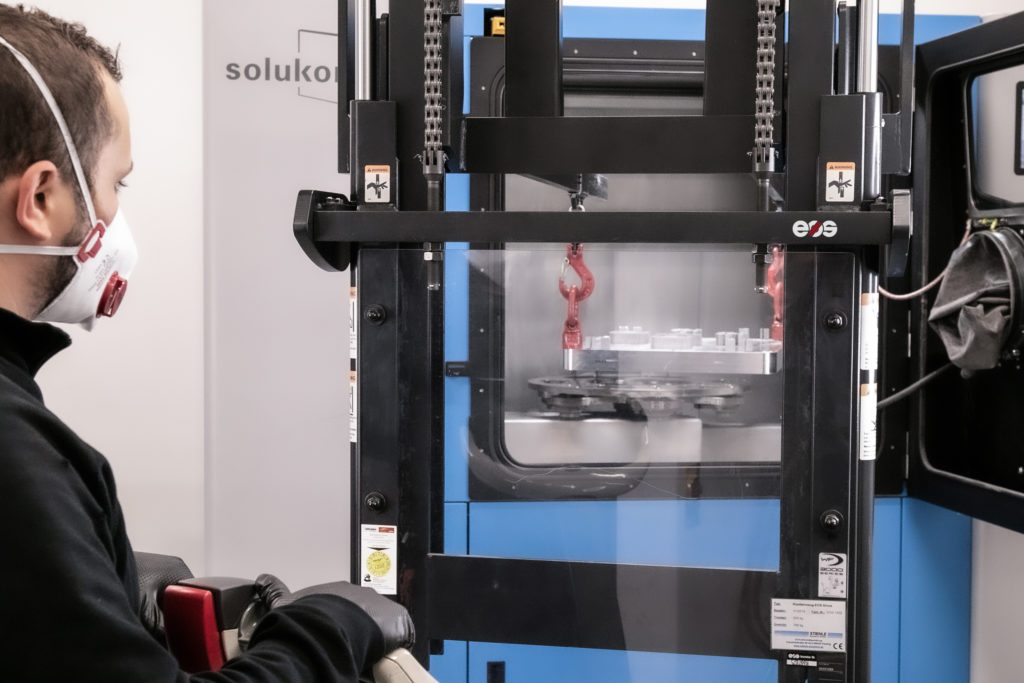In two separate announcements, Authentise has told us that it has partnered with Riven and Solukon. Authentise develops manufacturing execution system (MES) software aimed at managing and optimizing your 3D printers and their output. Riven connects real world parts to digital analysis and optimization through a scan and software solution.
Now, the Authentise MES (aMES) will be integrated with Riven’s scanners and software platform. Both products can be used together to take a scan made with Riven and port and populate all of the relevant information to and from Authentise. This includes the use of Riven’s Warp Adapted Model feature, whereby models likely to fail are automatically corrected so they can be manufactured successfully. This is being used by customers to speed up design iterations and get to more reproducible production parts faster. With the latest partnership, the Warp Adapted Model information can be viewed in Authentise.
“Integrating full-part 3D data into the Authentise aMES platform will greatly accelerate new product introduction (NPI) for parts made via additive manufacturing. Riven’s WAM technology is levelling-up part accuracy across all AM production techniques. I am very excited to see existing AM systems now able to produce production parts and meet tolerance specs that were previously impossible. Authentise customers will see immediate benefits – especially for setting up and managing series-production orders with Authentise,” said Andre Wegner, CEO of Authentise.
Riven’s promise lies in its ability to speed up new parts, designs, workflows, qualifications and materials. The central idea of Riven’s software solution is that, by evaluating real parts, its software can automatically monitor and correct issues in designs. This will then mean that, rather than having to print five parts to get a new idea to work, you may only have to print. Especially for service bureaus, materials companies, and people who generate a lot of iterations, this could be very valuable. If you’re developing a new material or qualifying a new part it can also quickly feed back part information to you for evaluation.
Authentise has also announced that it has partnered with Solukon. If you haven’t heard of this German machine manufacturer, you probably don’t make rocket engines or similar large metal parts. Anyone in that area of our business is gaga over Solukon. The firm makes depowdering systems in which large metal parts are quickly and reliably spun around on a platform to get rid of their powder, which can then be recycled. It’s a colossal thing meant to survive tactical nuclear strikes. If we get hit by a comet, I’m confident that the planet will be populated by cockroaches, some Solukon machines, Carhartt jackets and Arburg Freeformers.
Solukon’s Digital Factory Tool has now been integrated with aMES so that powder removal and sensor data can be logged and documented by aMES. Solukon system alerts, part information from aMES, and all relevant data are captured. This extends traceability and makes it easier to monitor and gain insight into process deviations in post-processing steps.
“By partnering with Authentise, we are taking the next logical step after the introduction of the Solukon Digital Factory Tool. Seamless data collection and interpretation throughout the entire production and post-process is the only way to achieve a true production line in additive manufacturing. Together with Authentise, we are closing a gap in data transparency and open the way for real Industry 4.0 projects,” said Andreas Hartmann, CEO and CTO of Solukon.
Connecting real part data to software and monitoring from sensors is some serious European Union funding catnip. Digital twins and the digitization of more manufacturing is underway and it will be these kinds of partnerships that stitch everything together. There is a lot of value in the web of loose data, signals, and potential information that abounds in various disjointed manufacturing processes. This is especially true in additive, where we make the shape in the machine and the part in post-processing. Connecting threads of data together in a lovely woven and comprehensible quilt will be an essential task for us if we want to make 3D printing a lot less like “Build a Bear Workshop” and more like actual Manufacturing.
